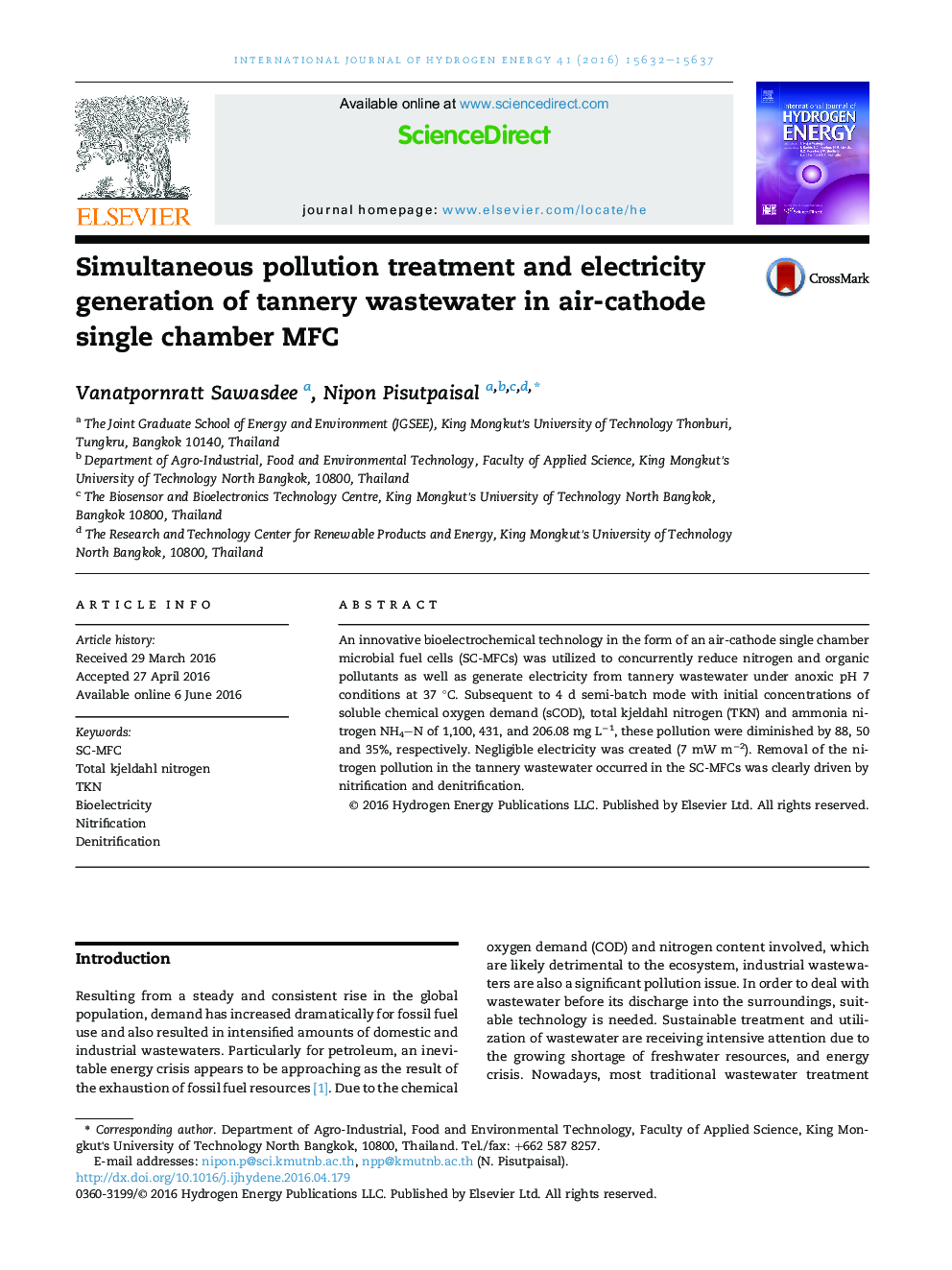| Article ID | Journal | Published Year | Pages | File Type |
|---|---|---|---|---|
| 1270282 | International Journal of Hydrogen Energy | 2016 | 6 Pages |
Abstract
An innovative bioelectrochemical technology in the form of an air-cathode single chamber microbial fuel cells (SC-MFCs) was utilized to concurrently reduce nitrogen and organic pollutants as well as generate electricity from tannery wastewater under anoxic pH 7 conditions at 37 °C. Subsequent to 4 d semi-batch mode with initial concentrations of soluble chemical oxygen demand (sCOD), total kjeldahl nitrogen (TKN) and ammonia nitrogen NH4N of 1,100, 431, and 206.08 mg L−1, these pollution were diminished by 88, 50 and 35%, respectively. Negligible electricity was created (7 mW m−2). Removal of the nitrogen pollution in the tannery wastewater occurred in the SC-MFCs was clearly driven by nitrification and denitrification.
Related Topics
Physical Sciences and Engineering
Chemistry
Electrochemistry
Authors
Vanatpornratt Sawasdee, Nipon Pisutpaisal,
